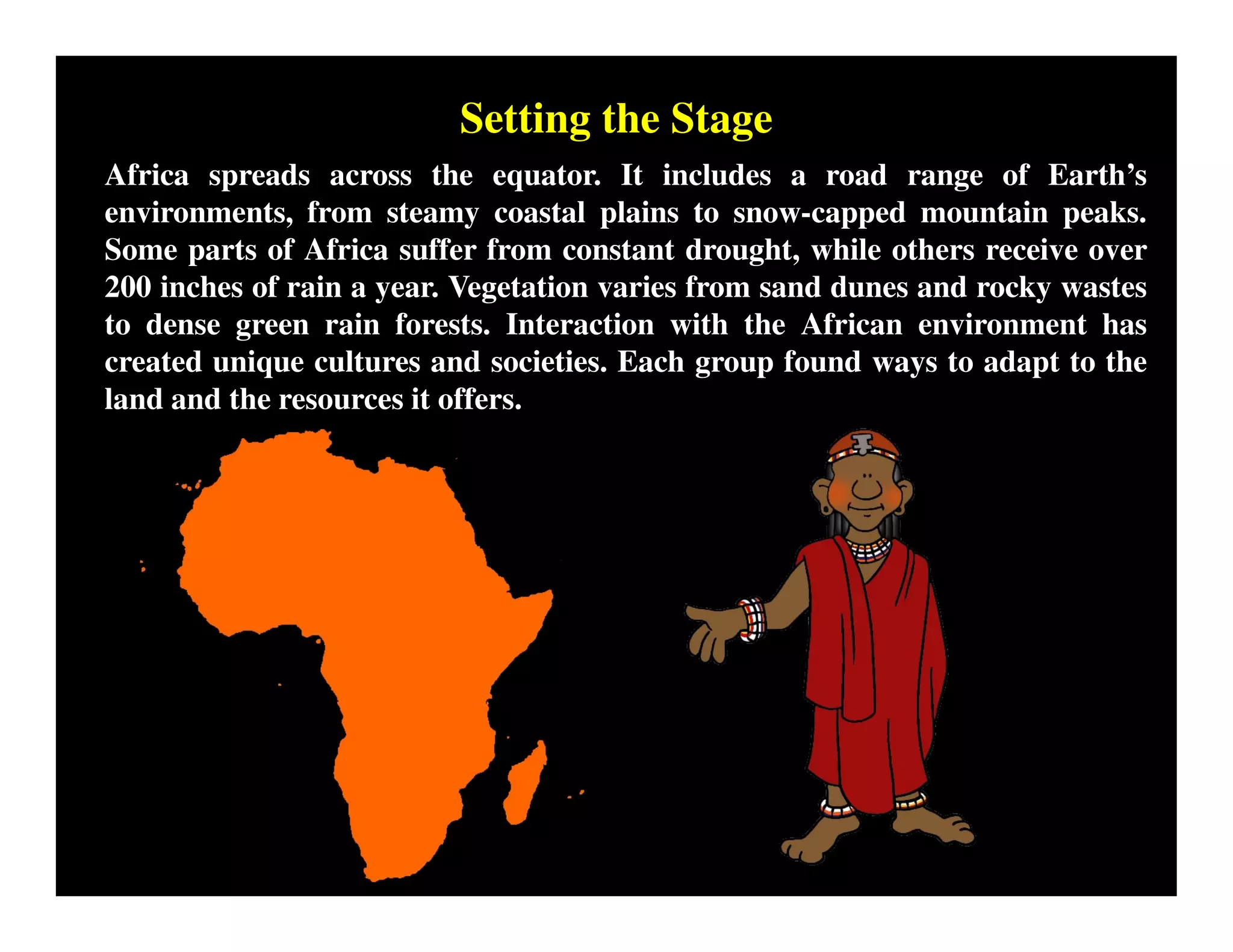The kings of Ghana became wealthy by taxing salt and controlling the price of gold. They taxed salt heavily as it was traded across the Sahara Desert. They also kept the location of gold mines secret to keep gold prices high and only allowed people to own gold dust, not large nuggets. Ghana's empire declined after losing a war to the Almoravids, which weakened the kingdom and led to internal rebellions. The Mali Empire then rose to power under Sundiata and grew greatly wealthy under Mansa Musa as he expanded the empire and promoted Islam. However, Mali later declined and the Songhai Empire formed, becoming powerful under Sunni Ali before Askia Muhammad rose to lead a successful










































